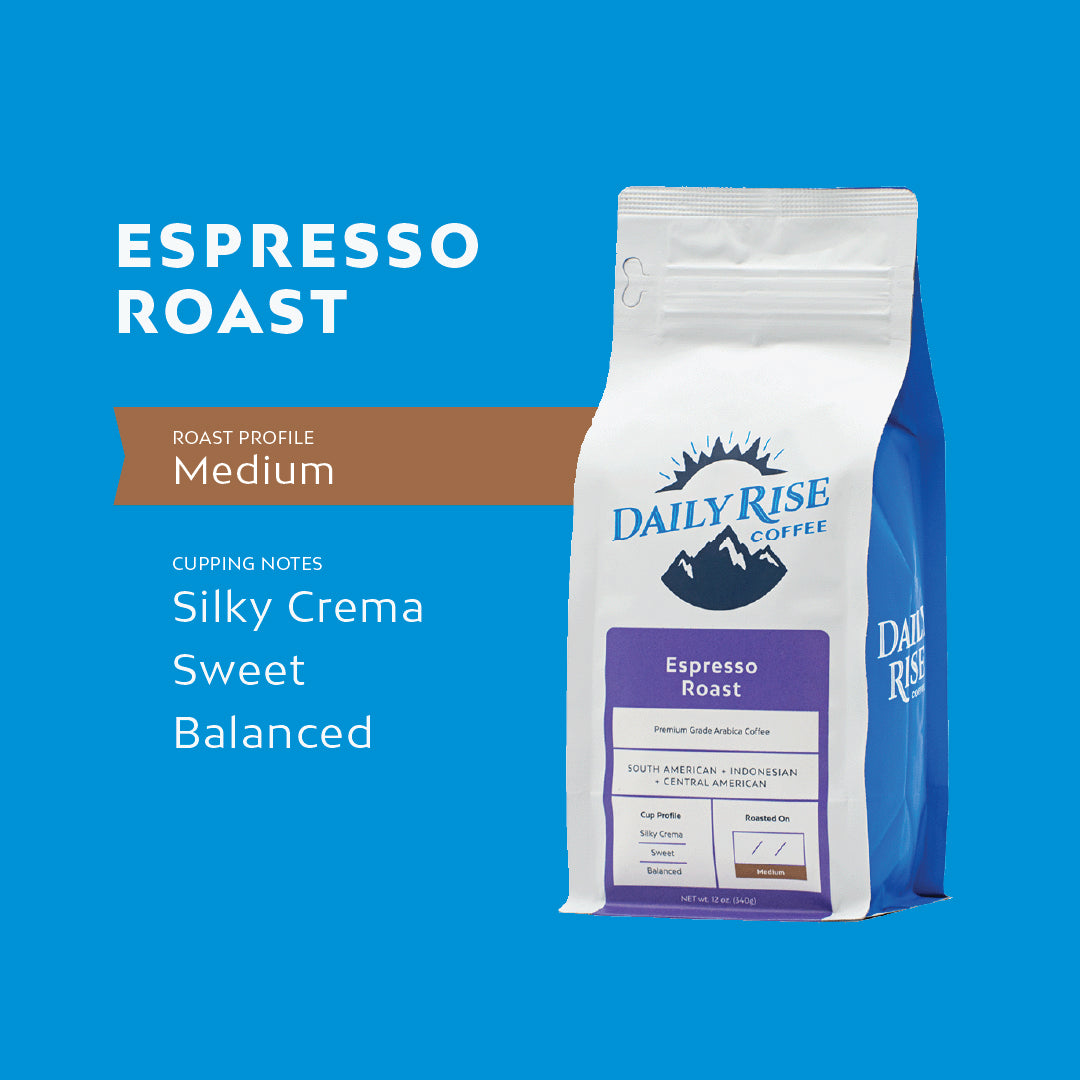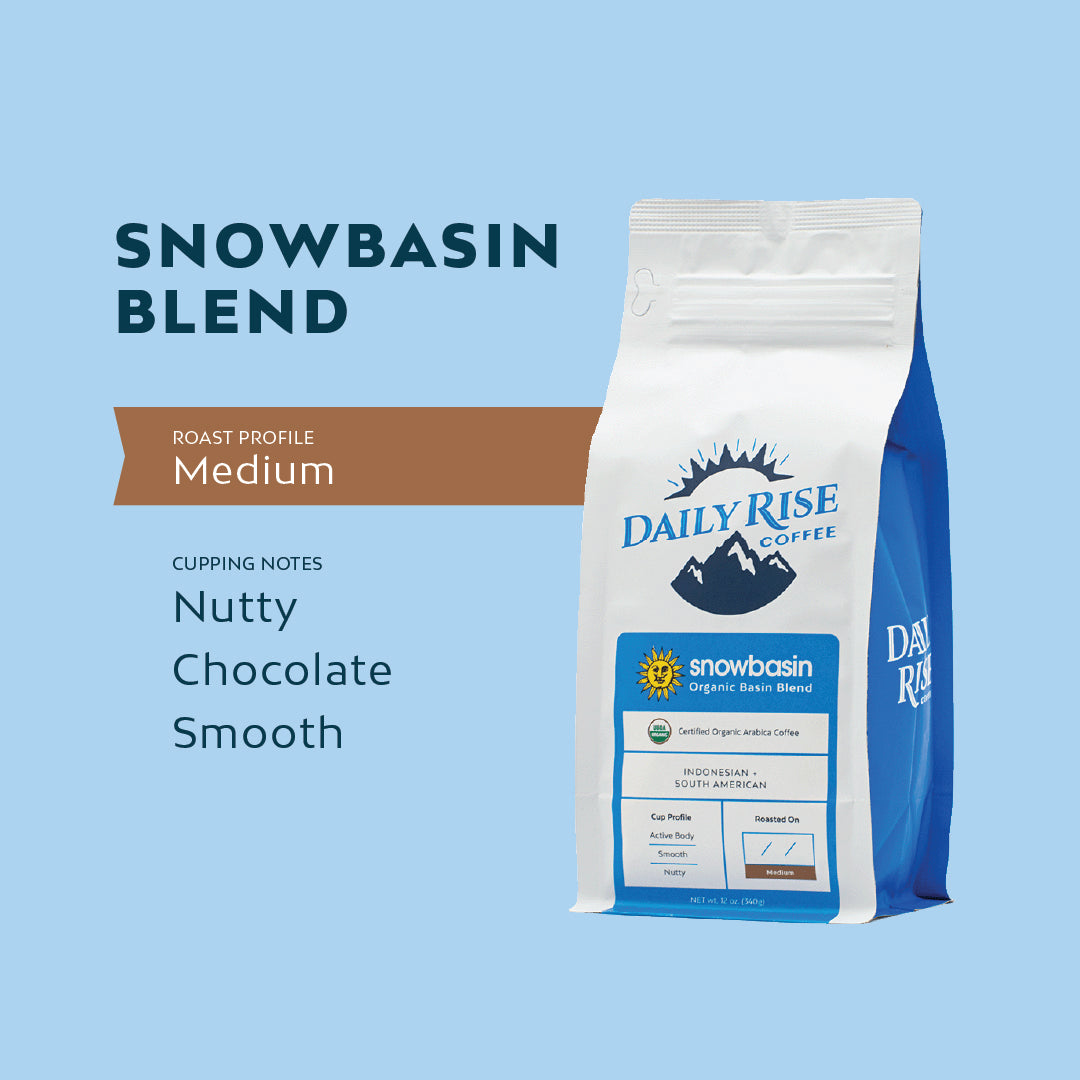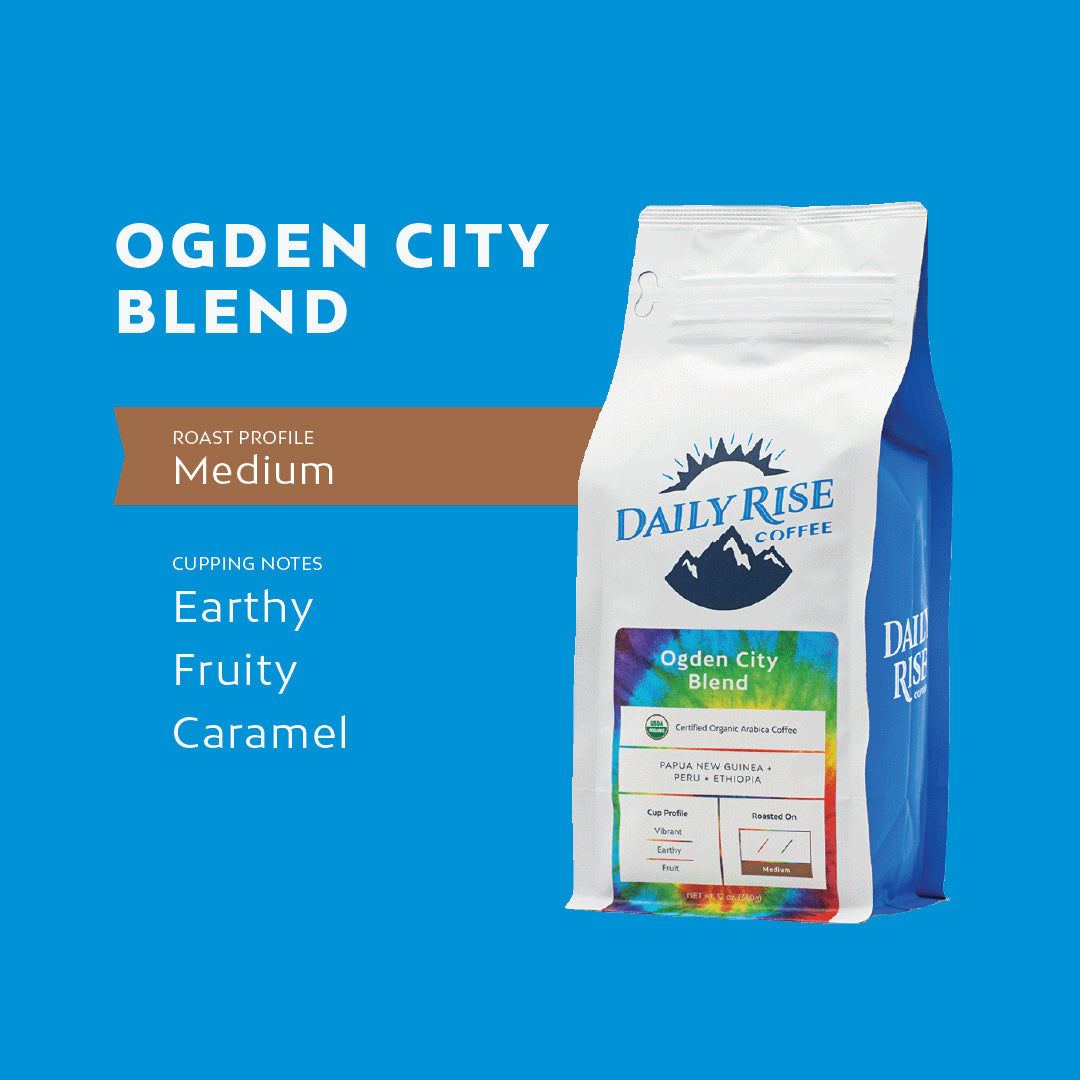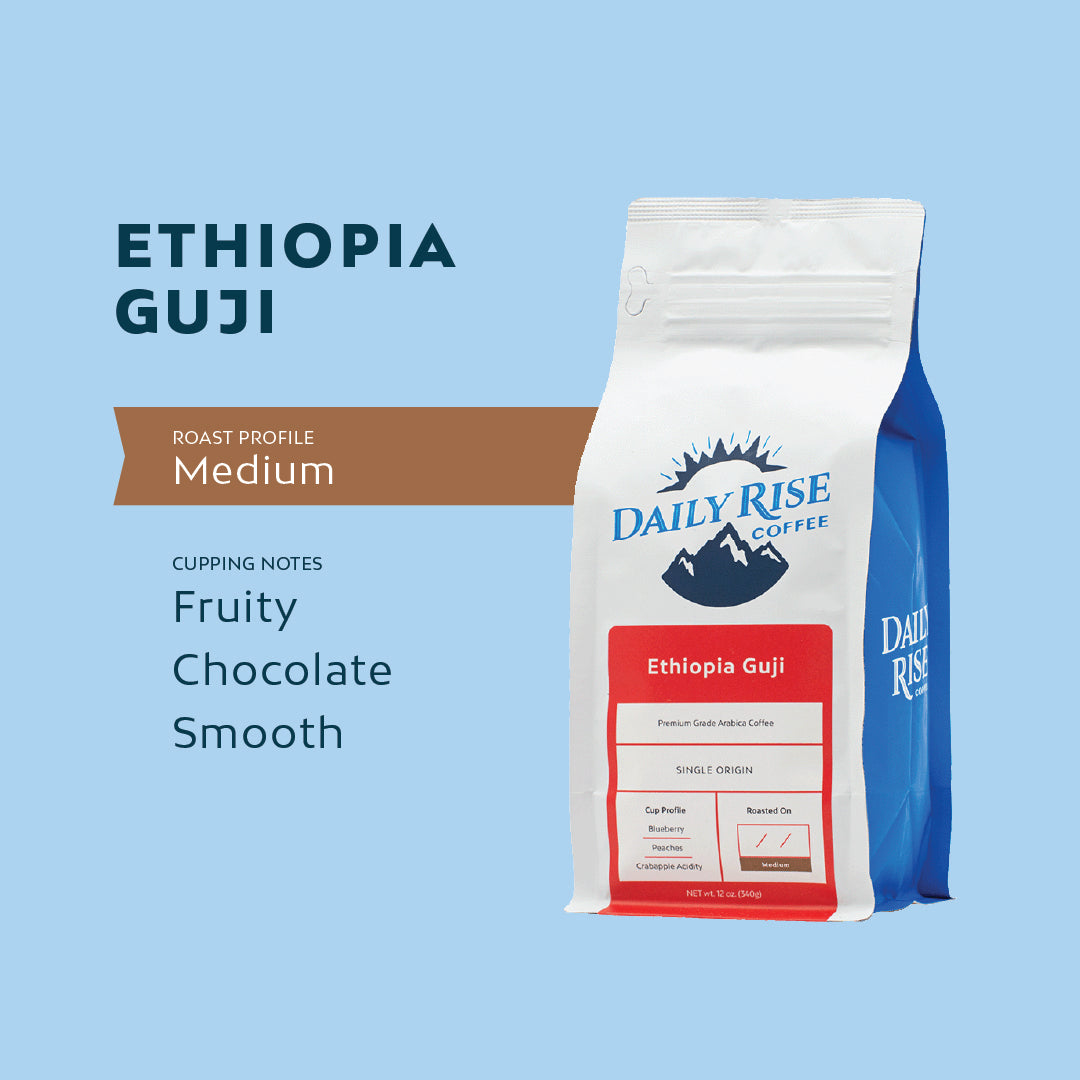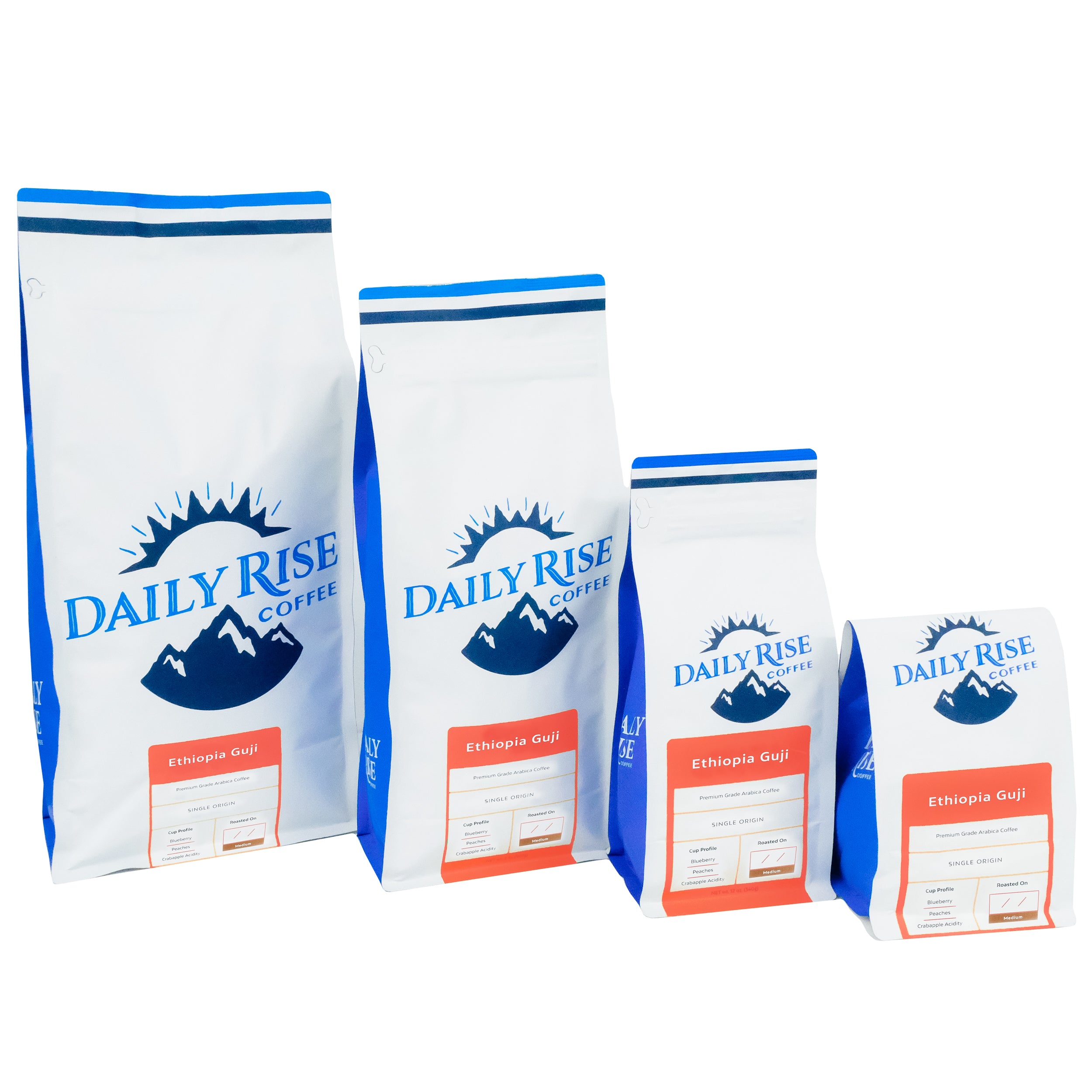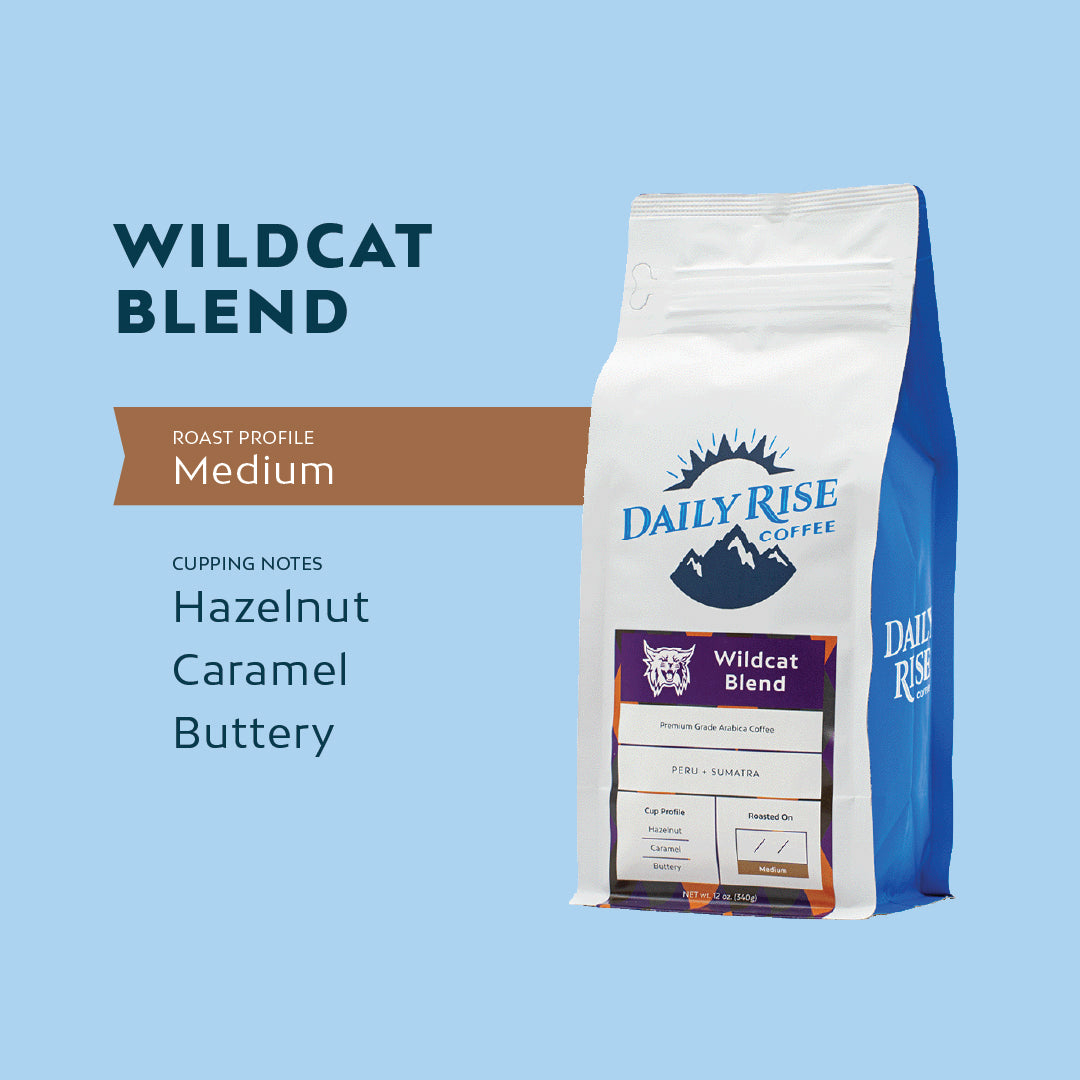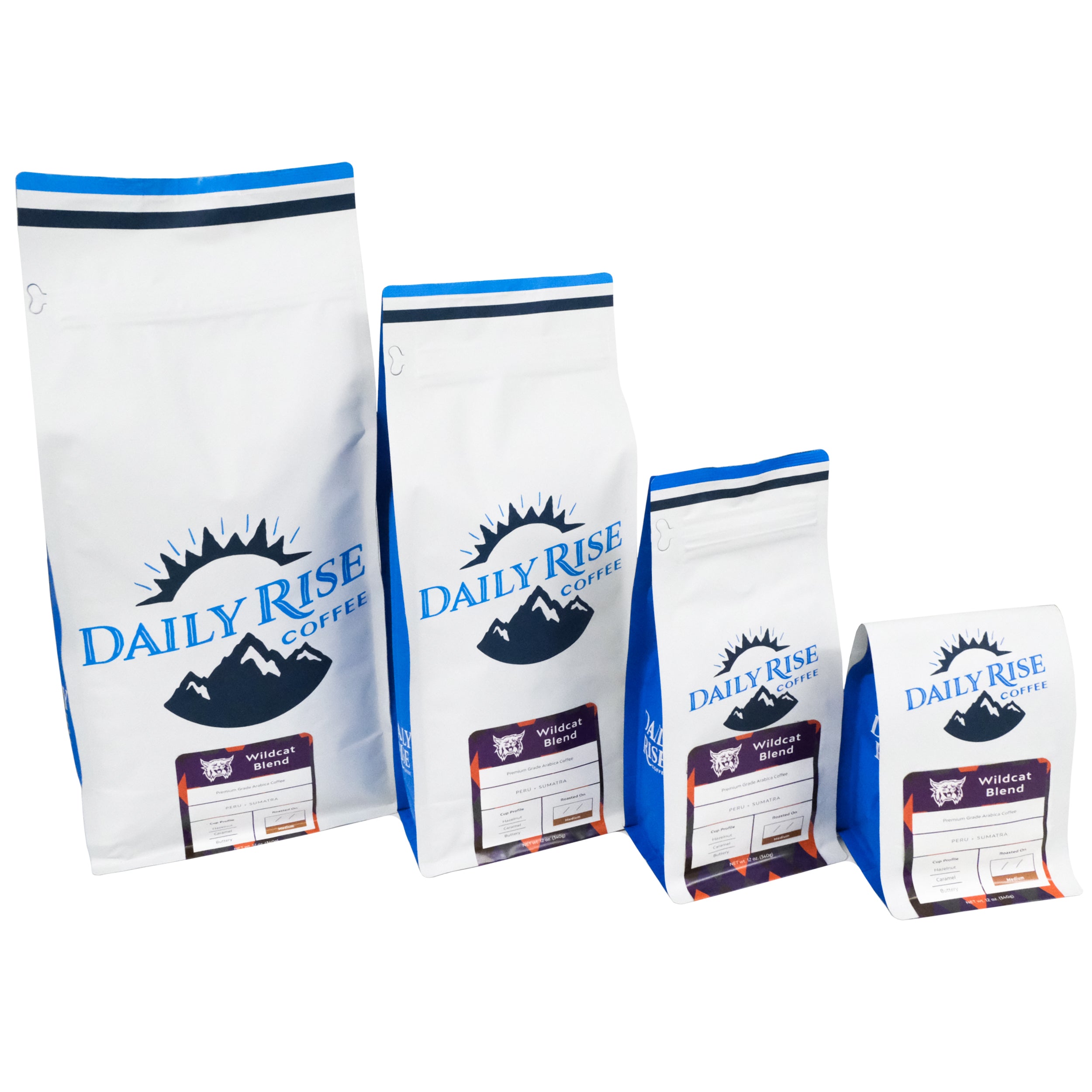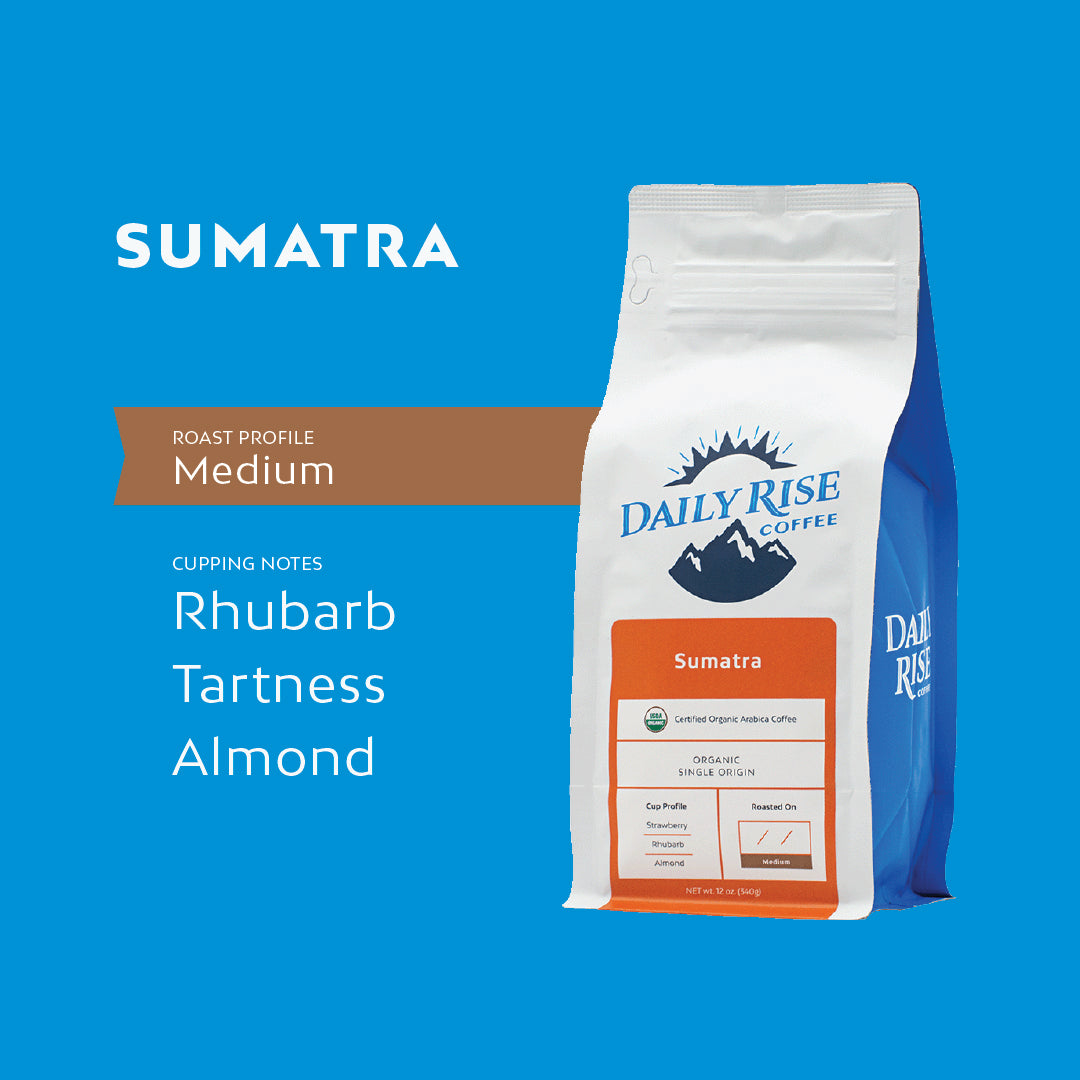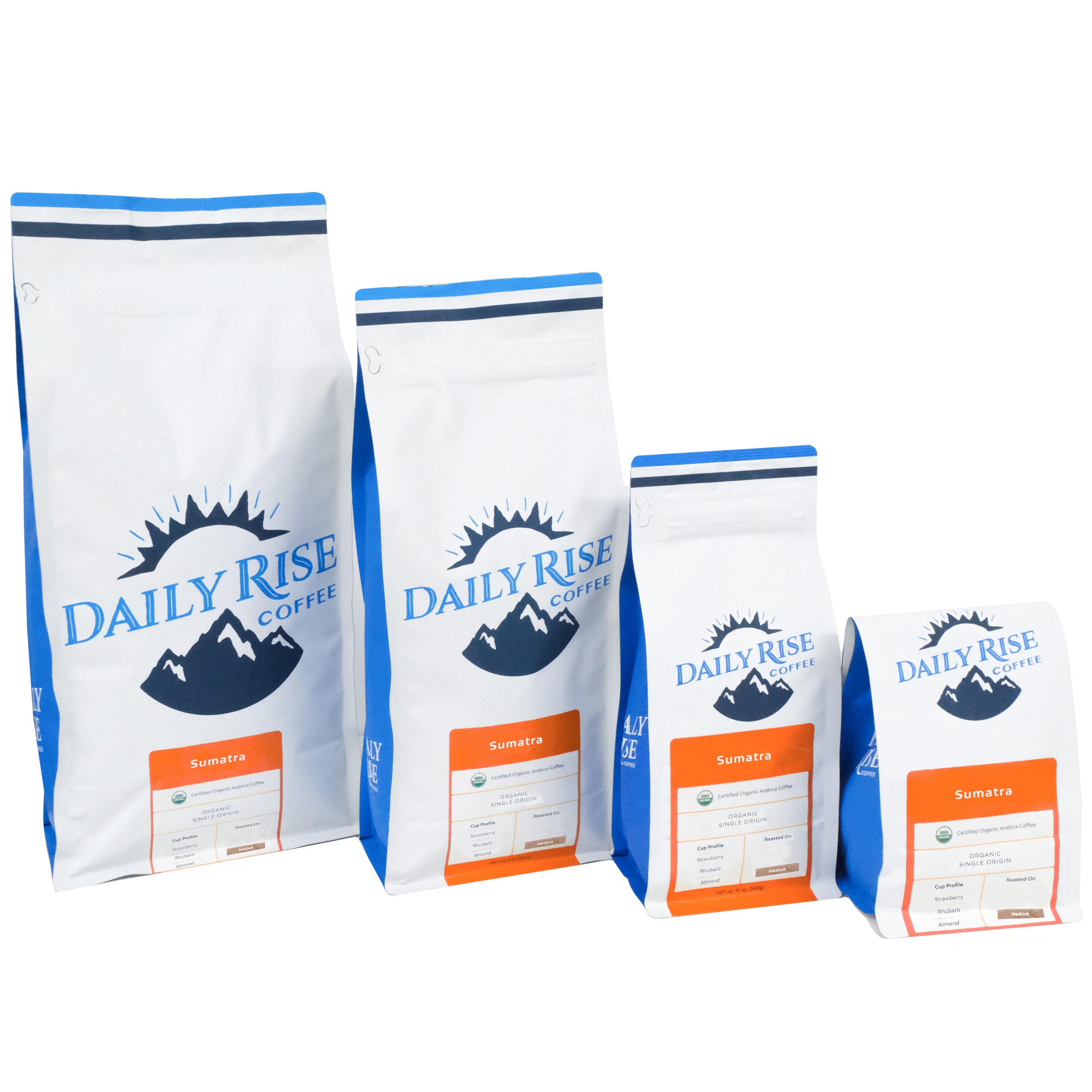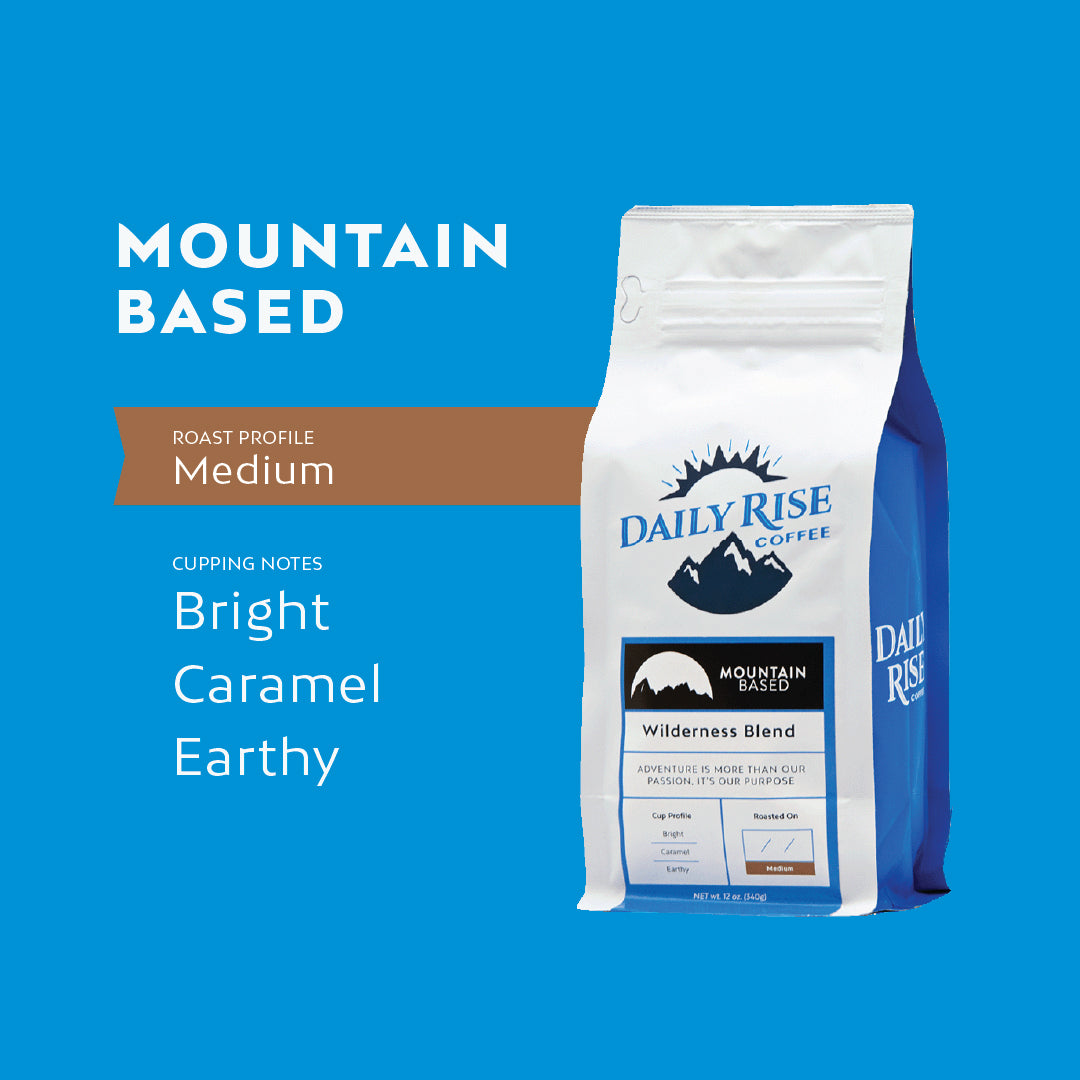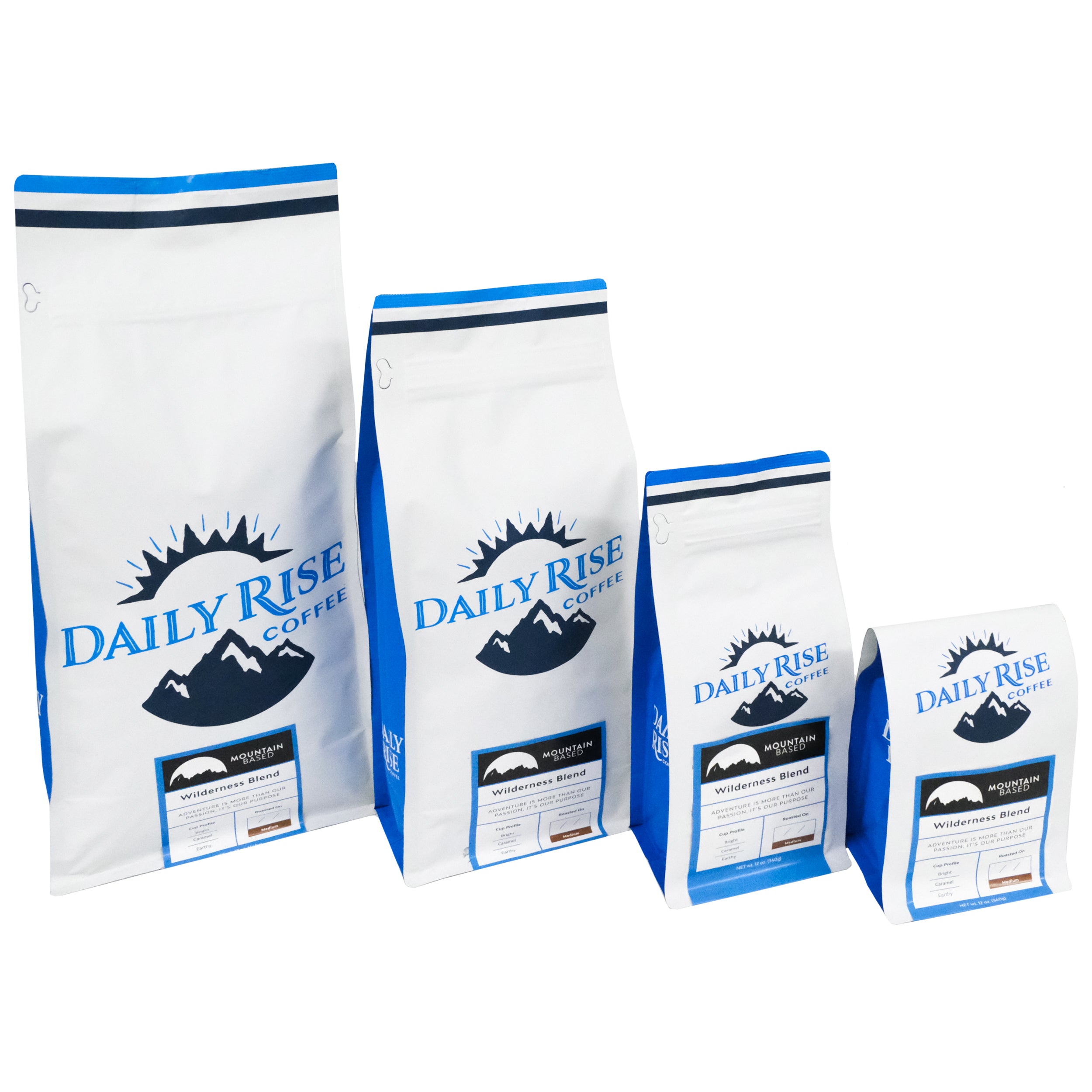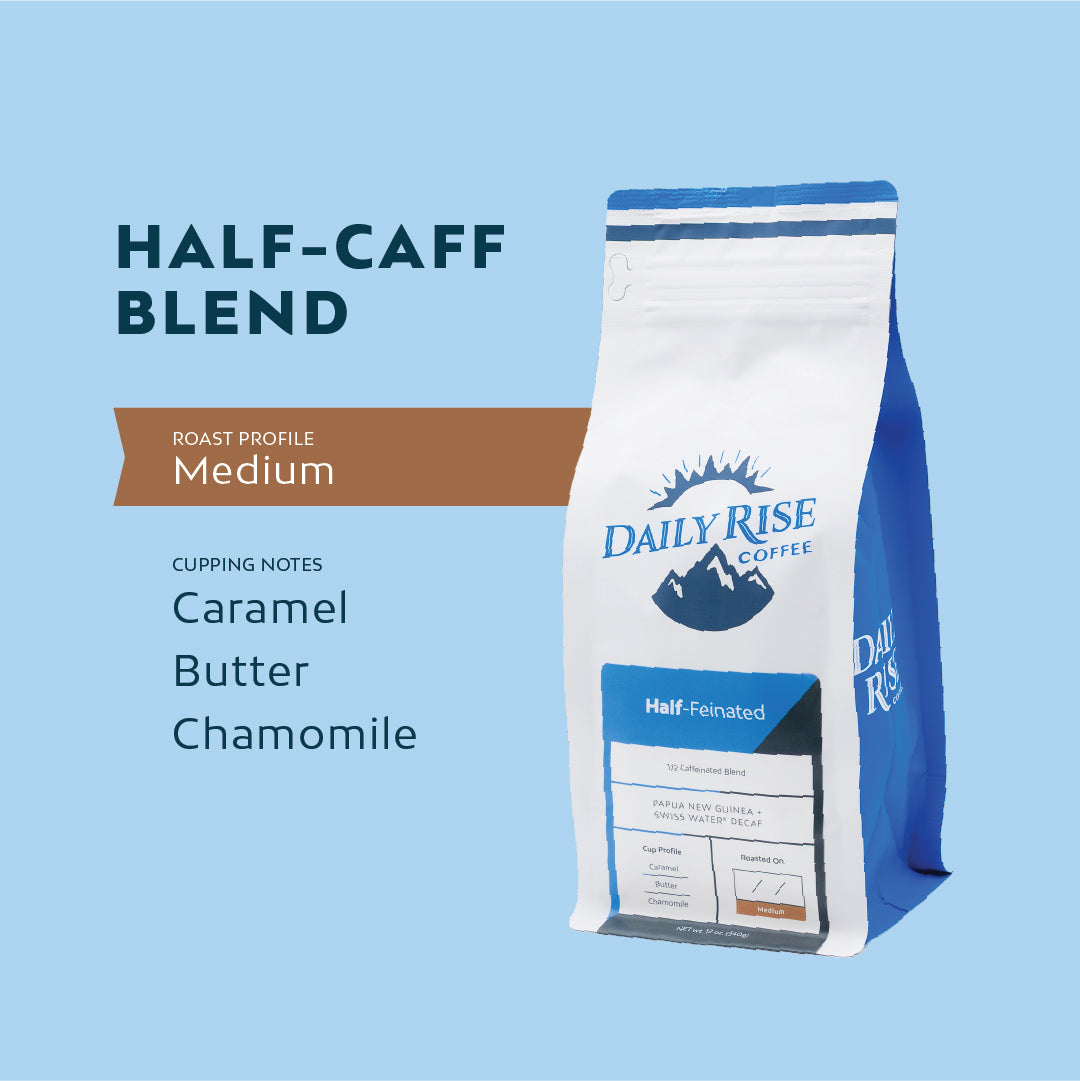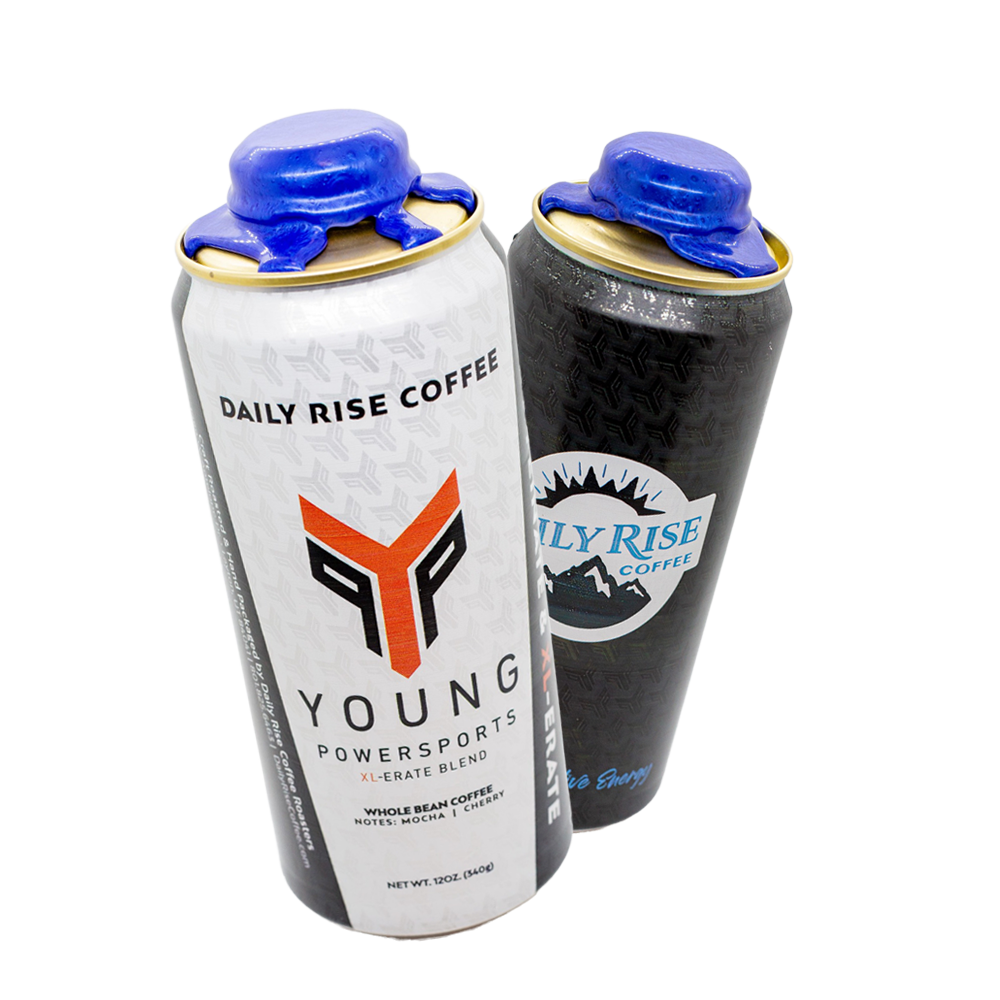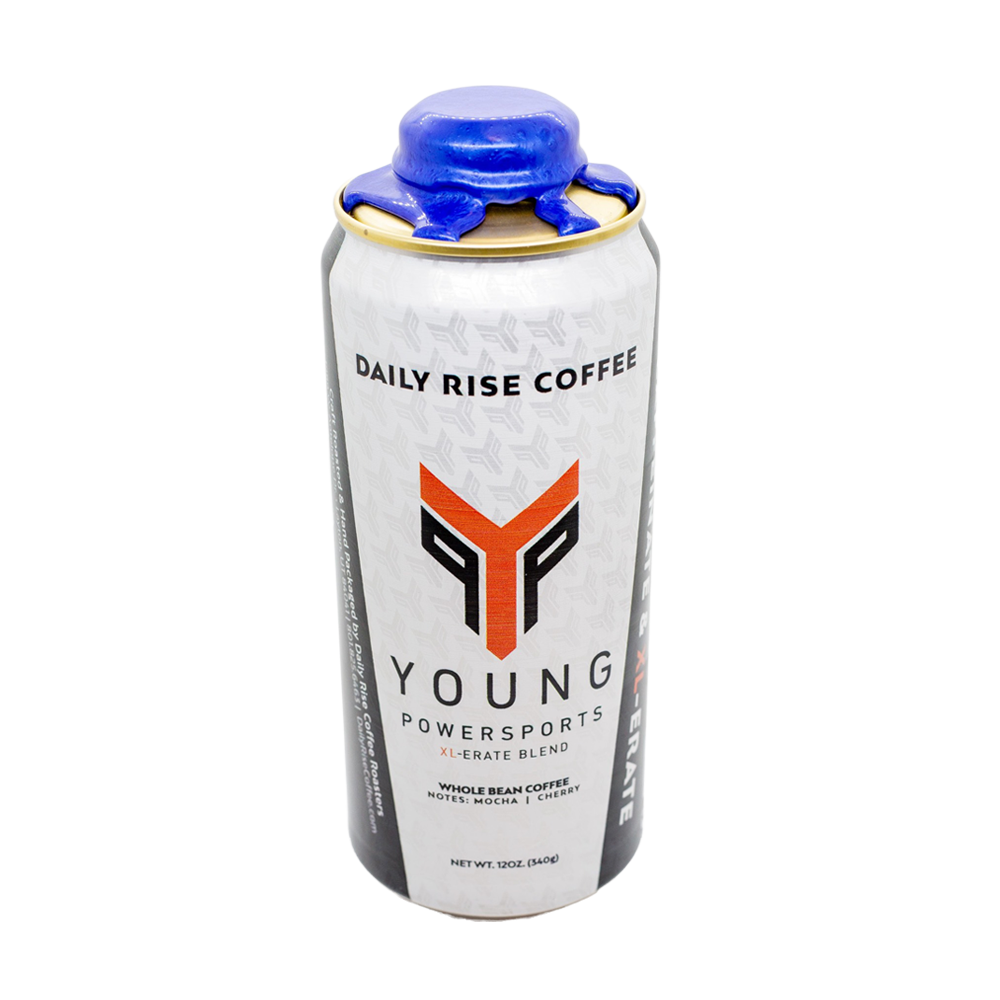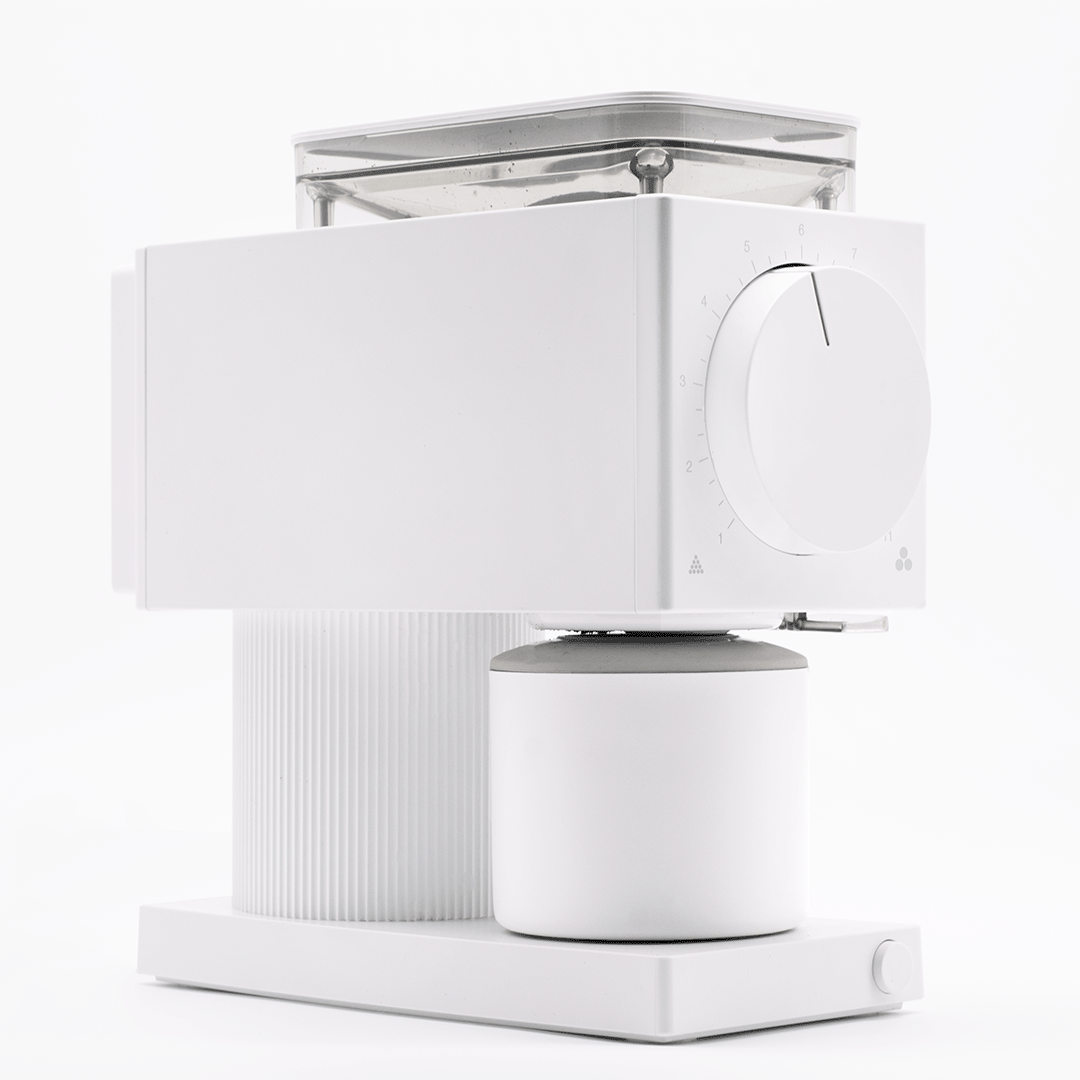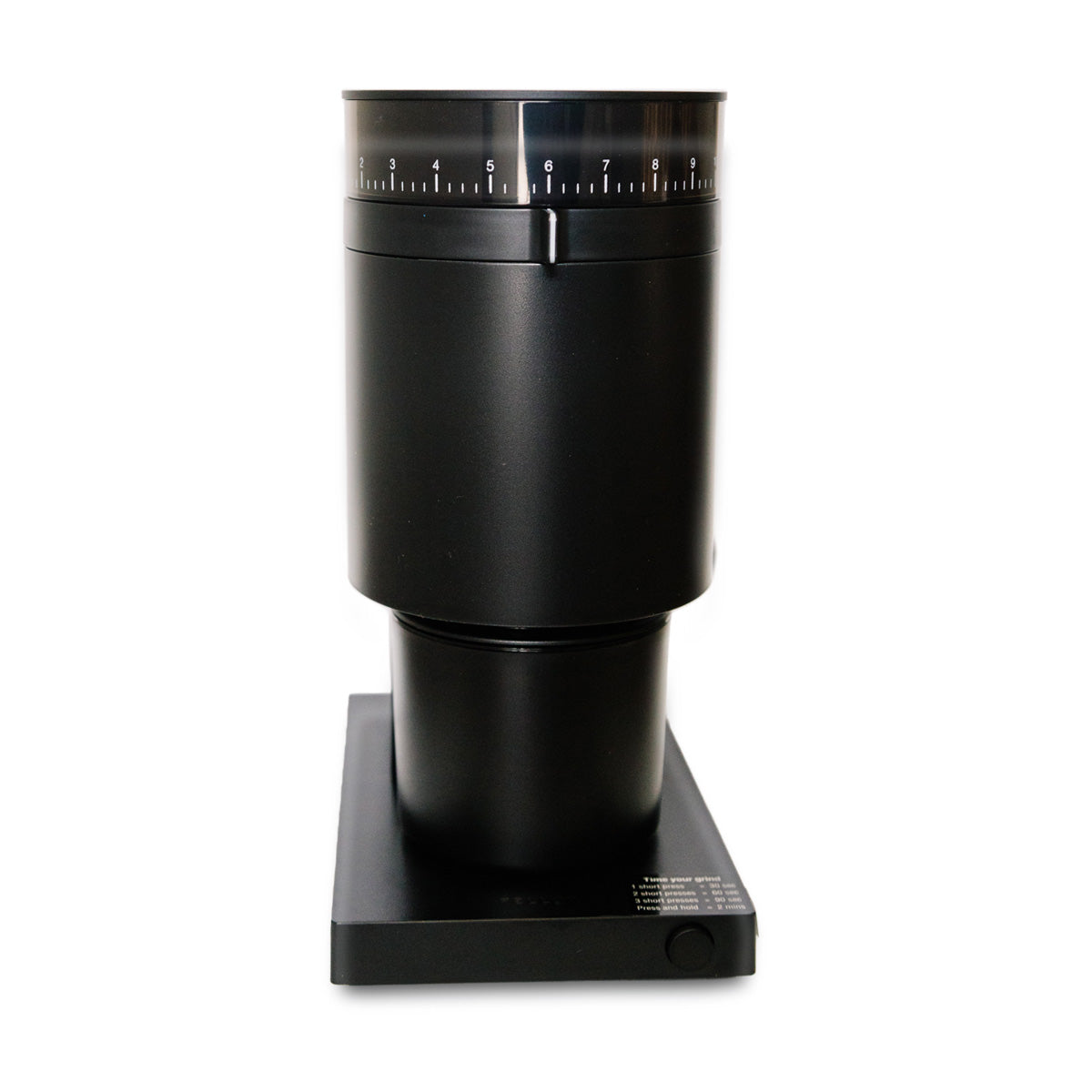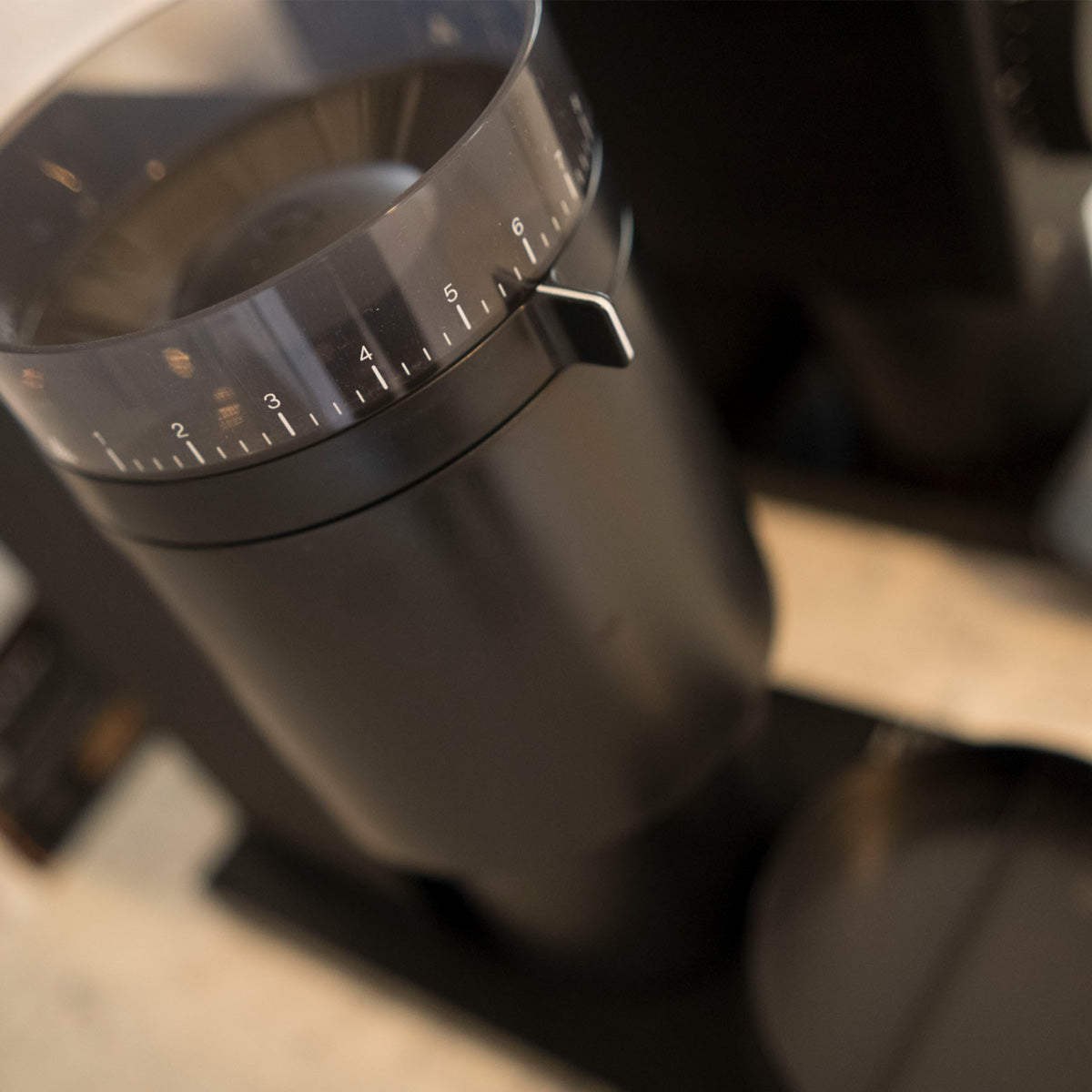An Ode to the Opus
ARTICLE
by Paydn Augustine
Hello friends and family! Paydn from Daily Rise here, a veteran of the weekday pour-over and humble coffee lover. Today I’m talking with a fellow–rather, a pair of Fellow’s–in a review of the Gen 1 ODE grinder and its newer, more spherical family member, the OPUS. In the world of home grinders–especially for first-time buyers–it can be a bit of a nightmare trying to figure out what’s going to be best for you, how much you should spend, and most importantly if you’ll get your money’s worth out of a sleek looking design that might be all looks and no function. Well, I’ve been playing around with both of these higher-end grinders for over a week now, and I have a direct comparison of the two that I’d like to talk about and maybe help you decide which one you should shoot for.
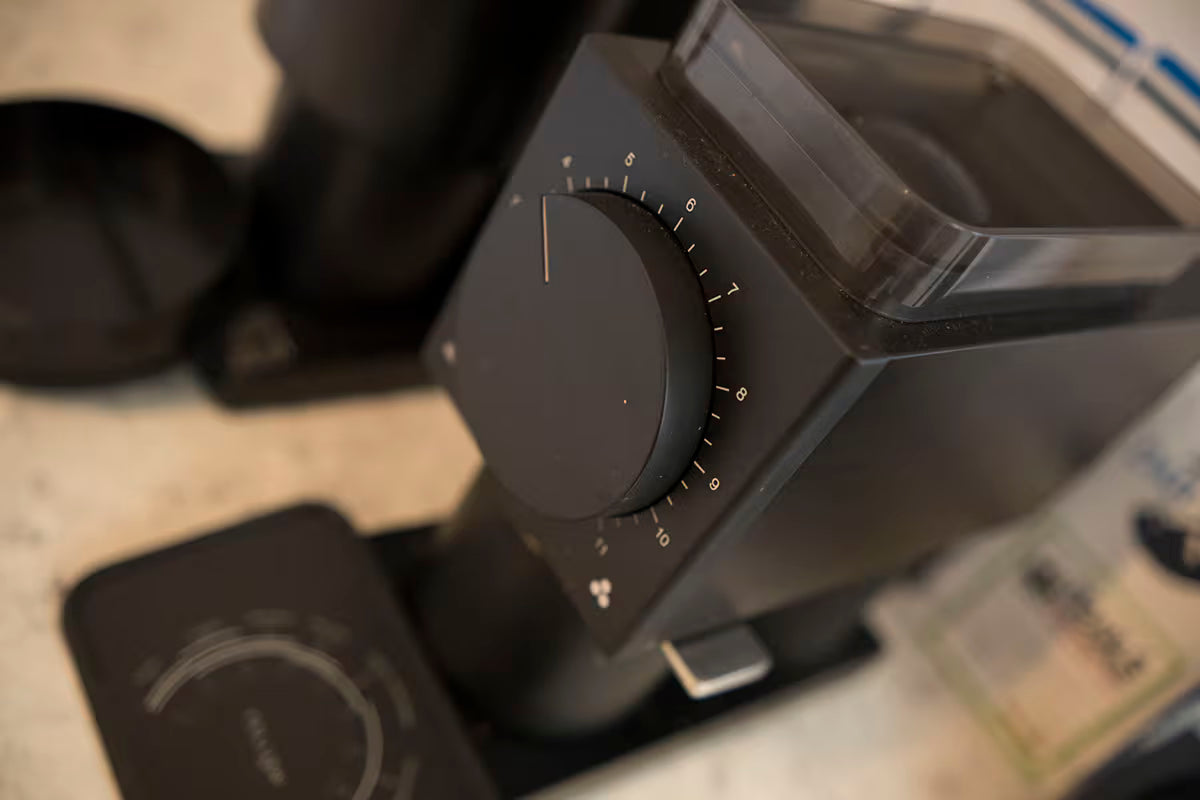
The ODE
Features a 64mm Flat burr and with that is going to be ideal for highlighting some of the more subdued and varied flavor profiles of the coffee you’ll be grinding, and makes for a slightly more acidic, clean, and light profile than the Canonical burrs in the OPUS; This important note will come into play when we get to the performance of the two grinders, but let’s stow that topic for now. It’s worth noting as well that Fellow offers a set of upgrades to the standard stainless steel burrs that come as a set of Red Speed SSP burrs. These burrs have a much finer tolerance and would bring your Gen1 Ode closer to the standard set in the Gen2, but be ready to cough up the dough, as the upgrades come in at $185.
The Ode also comes with a metallic catch with a fairly strong magnet stowed in the base of the cup that automatically centers to the grinder when placed beneath the housing, and a single-serve reservoir that is a delicate touch and adds a lot to the general aesthetic of the boxy body. Speaking of the reservoir, the lids to both the Ode and the Opus include a very nifty graphic print on the interior side that gives a general outline of recommended settings for whatever brewer you are using. This is, in my opinion, another nod to the craftsmanship and attention to detail that Fellow puts in all of their products: You really get the sense that the folks over there actually know what they're doing, and not tagging on tacky additions for the sake of fitting more useless bullet points into a product ad.
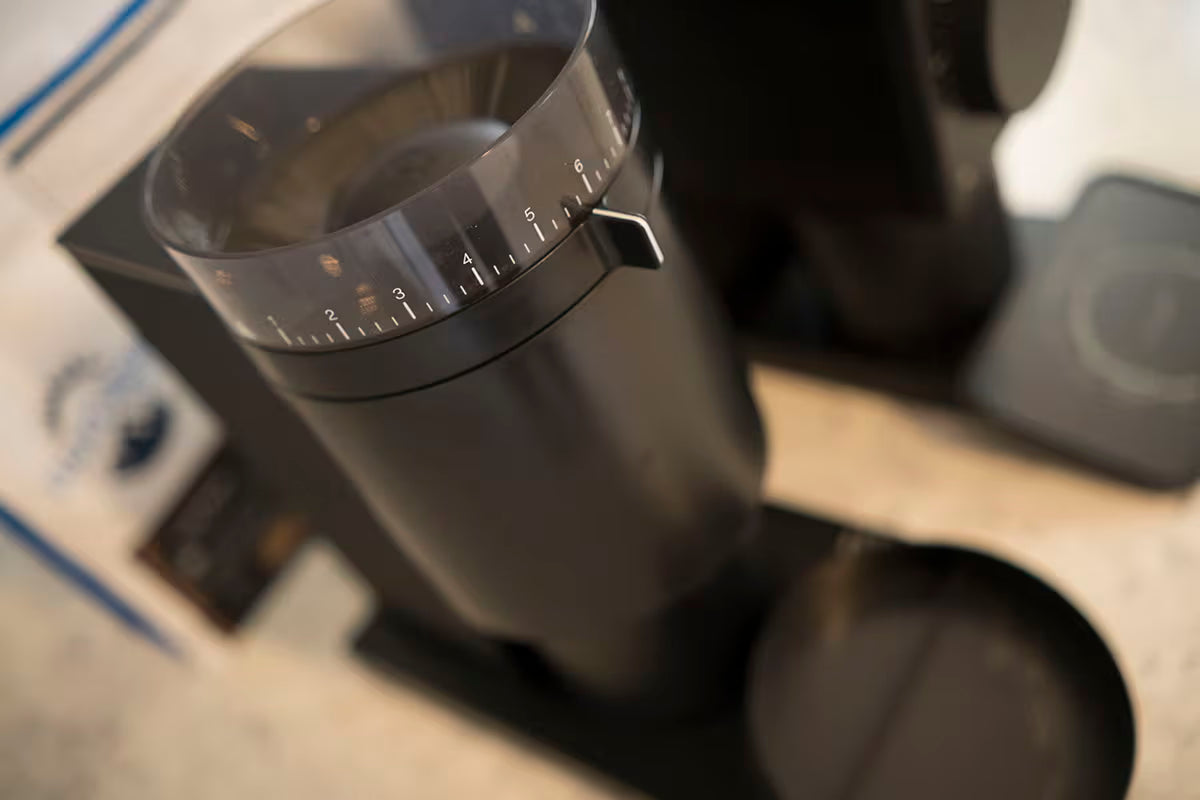
The OPUS
Is set stock with a 40mm Canonical burr set that will bring out a deeper, richer, full-bodied profile in your brew that will compliment a deeply flavorful roast, combining a lot of the flavors into an immaculate flavorful symphony.
The Opus and all of its accessories are built of a seemingly durable and high-grade plastic that doesn’t take away too much from the overall appearance of the grinder nor does it make anything in the system feel cheap. In fact, when compared to the steel catch of the Ode, I think the all-plastic catch of the Opus is a great solution that cuts back on the heavy static of the metallic cup while maintaining the magnetic sticking point that gives 100% consistency when tossing the cup right up under the Opus.
The Opus also includes a micro-adjustment feature to its canonical burrs that you can use to precisely fine-tune the grind to fit your very particular palate and preference, but be warned that the adjustments can be a bit of an involved process as the grind level indicator does not accurately reflect the micro-adjustments, and in fact, moves the tracker the opposite direction. Keep your notebook handy if you plan to jump into the nitty gritty here!
Showdown time
Now, most reviewers online are prone to tossing these “head-on” comparisons into cute little charts and fancy diagrams that show either the data they pulled online direct from the manufacturer or from the relentless levels of testing they’ve done in highly controlled environments to give the absolute most detailed review they can; That’s not what you’re going to read today though, and I hope it leaves you all the more educated and entertained knowing that I’m just a person who loves coffee, and I brew it at home every day. I don’t have an overwhelmingly fancy setup, but I’m far more into the hobby than the average Keurig connoisseur and I think that’s exactly where a lot of us who end up owning the gear from Fellow are positioned: The day to day warrior, coffee-loving enthusiasts with maybe just a few too many brewers crowding the pantries and coffee stained countertops and a perpetual aroma of finely roasted Ethiopian beans settled into the air around us like a caffeinated cologne or French Pressed perfume.
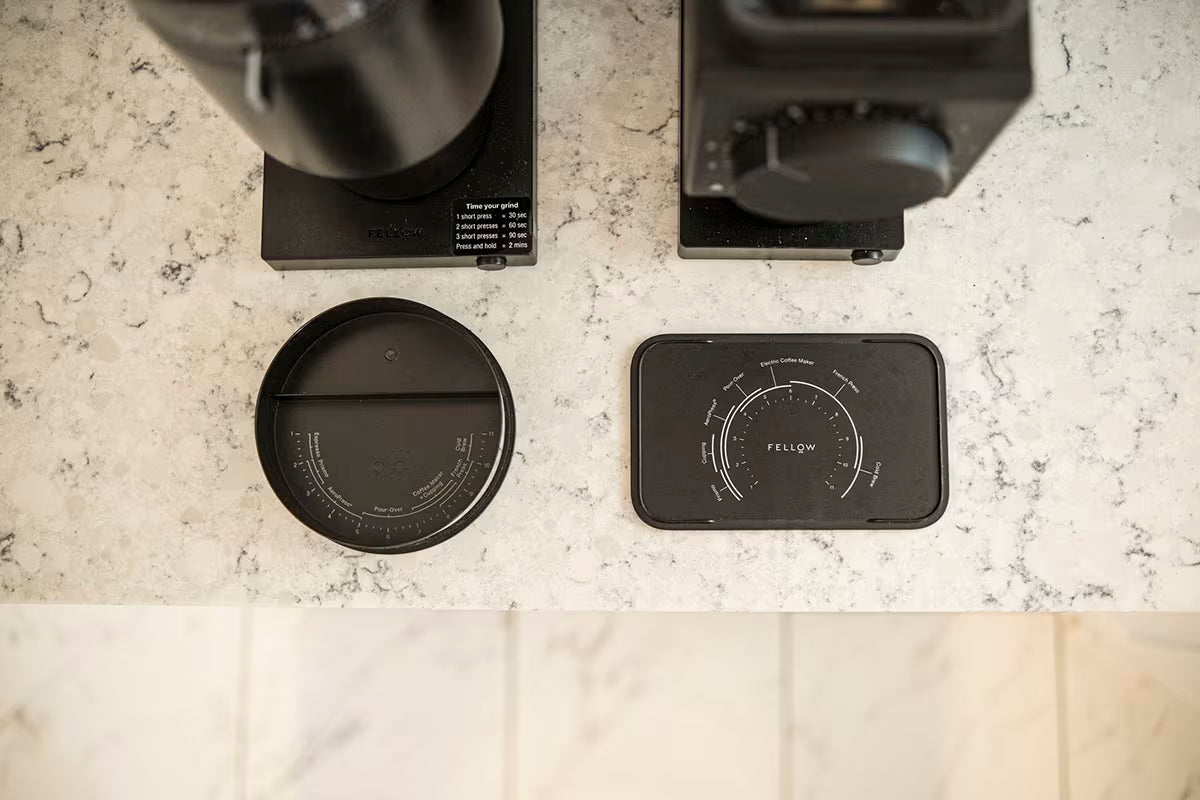
Grounds for the Grind
First things first, the Opus absolutely grinds finer than the Ode 1, by a long shot. When I was doing my initial tests I started with the Ode at its coarsest and finest grind setting before moving on, and the moment I got to the Opus’ finest I thought I might have set the Ode to the wrong setting. A second run confirmed the astonishment as fact, not fiction, and it’s fair to say in the test of the quality of the grain, the Opus comes out far on top. Another note on the grinds here is that I probably wouldn’t recommend these if you are an espresso purist and that’s all you want out of either of these grinders. I for one am not, but I have a great friend who is, and from all I’ve learned from him on the topic one thing is clear: The Ode and Opus just can’t get fine enough to make a good shot, with the Opus coming close enough to get the job done if you’re in a pinch. That said, I believe the Opus is more than capable of producing fine grains for espresso-like drinks and brewers; Think Mokapot, Aeropress, and the other products that get close to espresso without true crema.

During the grind, Ode comes out on top in terms of speed finishing nearly twice as fast as the Opus in my tests, while the Opus takes the gold in terms of noise output; but let me be clear in saying these are both magnificently silent machines. I’d used a $60 Cuisinart grinder for the better half of a year and each time I would kick the thing on I’d have to either plug my ears or run for cover because the noise was worse than a blaring train horn first thing in the morning. Both the Ode and the Opus make grinding coffee at any time of day a far more enjoyable experience from the sound level alone, and I’d say without a doubt the noise levels these machines have are worth the price. I might be a bit picky in this field, but it’s just such a big change of pace for the daily routine and I really can’t say enough good about it.
Another nice feature I like about the Ode over the Opus is an auto-stop feature that comes in the form of a subtle alarm that lets you know the grinding is done and cleared out, whereas the Opus only grinds in 30-second increments or until you press the power button once again when you hear the burrs clear. It’s not a make-it-or-break-it feature by any means, but it is nice and really adds a level of sophistication and class to the Ode–matched by the angular aesthetic and much heavier steel body of the Ode over the Opus makes it, in my opinion, a more visually stimulating piece of kitchen decor. It’s worth noting that a few times I noticed a bit of a jump when the Ode started up, not so much to make it move around the countertop at all but noticeable when you’re looking at it. The Opus stands tall and proud without a single shake in its boots during the entire grind time.
Let’s play Catch
The catch of both products feels solid and well put together, and both have their merits. The Ode’s is a touch smaller, has a rubber lid, and a heftier feel to it. The magnet towards the bottom of the cup is surprisingly strong, making the “lock-in” on the Ode’s plate feels very solid, but it will absolutely hold on to a metal spoon if you’re trying to scoop grounds out from the bottom. Use caution here, or measure first and grind second to avoid the situation entirely. There are two metal guides in the Ode’s catch that are intended to help funnel grounds, but it seems like they really hinder the process more than help it, with grounds often getting caught up on the underside of the wings. It sure looks cool, but functionality is lacking.
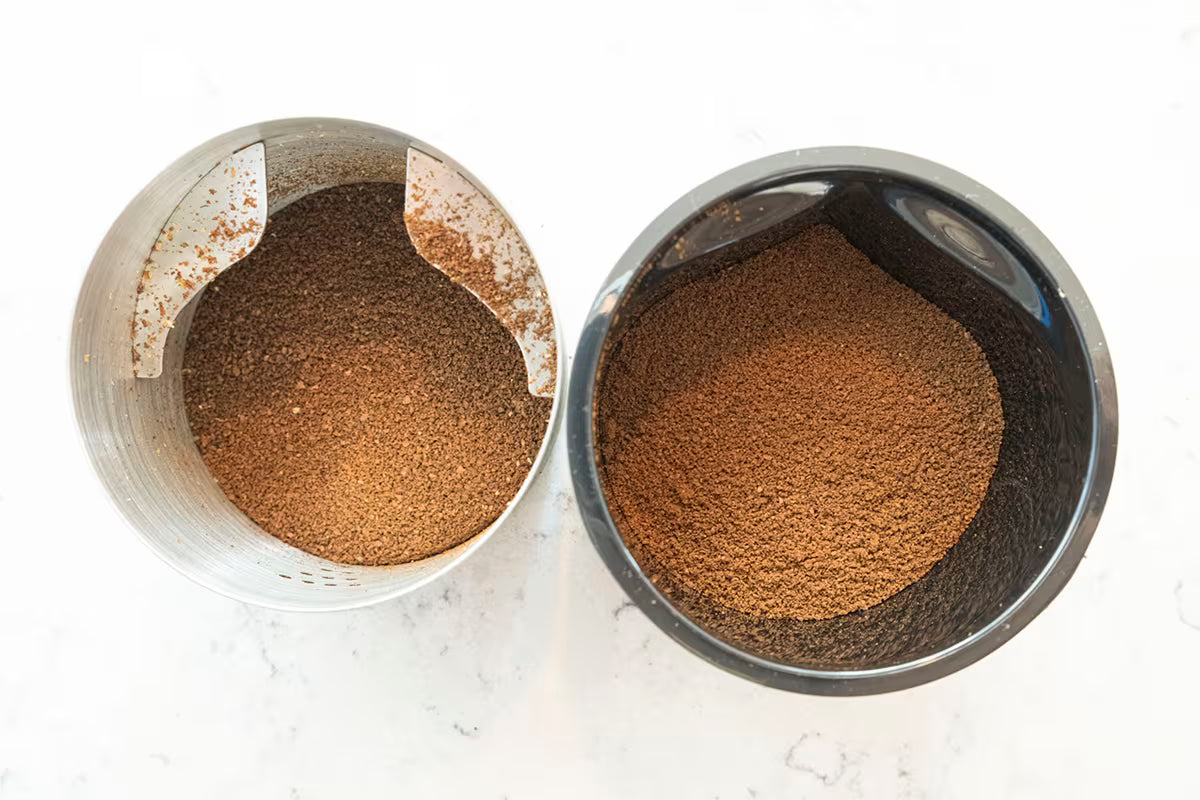
The Opus’ catch is the entirely plastic cup we covered before and features a nifty little divot in the center of a single side that really helps funnel grounds out into whatever brewer you’re using, but it’s still not quite effective enough for AeroPress or other smaller funnels. There is another catch that comes in as an addition to the Opus, a rather cylindrical-looking plastic hollow “stamp” that can be used to fit into the puck of an espresso machine and thus the circumference of that Aeropress. This isn’t really an elegant solution, but it helps solve some of the problems in trying to pour into small spaces that I was pointing out, though it seems like it’d still be easier just to spoon the grounds in. The magnet in the Opus’s catch seems to be far more subdued than that of the Ode’s, feeling a lot more like a guide than a locking action that the Ode boasts. That’s not to say you’ll need adjusting after you place it on the plate, it’s plenty strong enough to guide the catch right under the burrs.
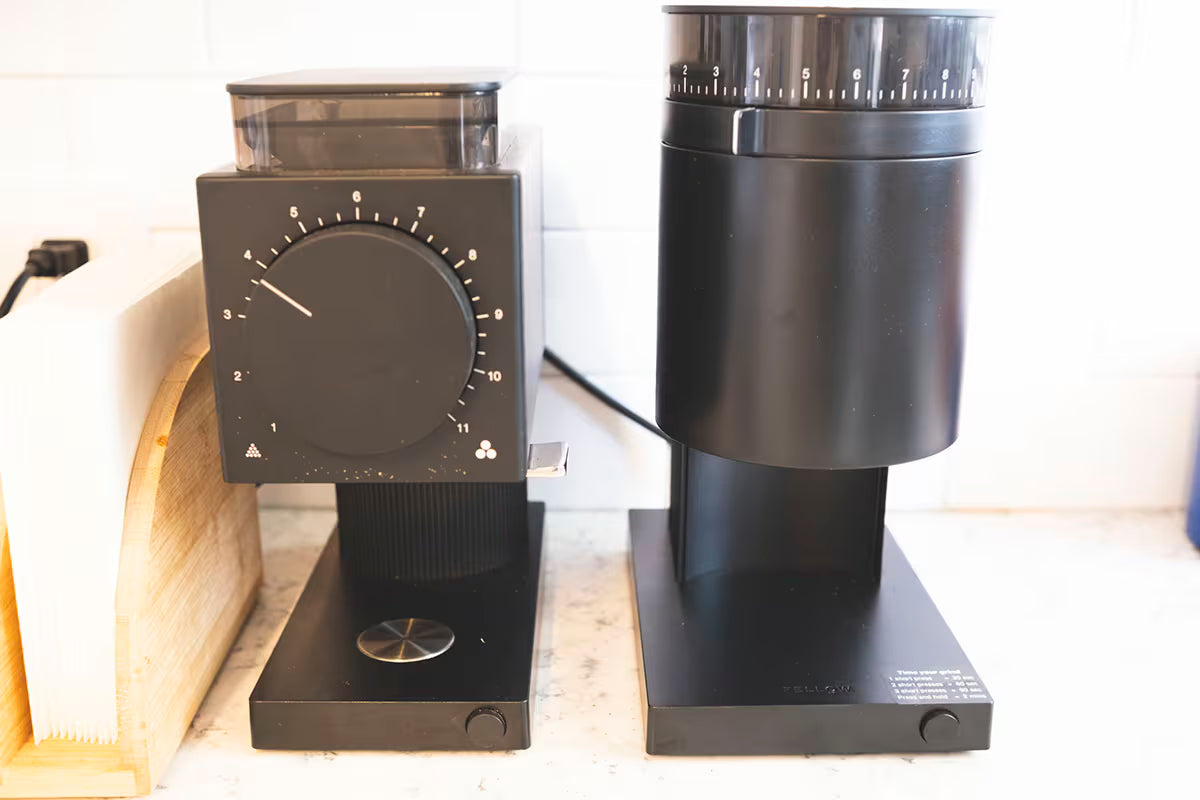
Messy Fellows
I’ve heard claims about the Opus being a “mess-free” grinder, and friends let me tell you the tough truth: There’s no such thing as a mess-free grinder. Perhaps one day when tech improves and humanity comes together to unite on this terrible issue we will see the days of perfectly clean coffee prep, but for now, we’ve got a couple of grinders that make… Just about the same mess as each other, but far less mess than any other grinder I’ve ever worked with–yes, even hand grinders!
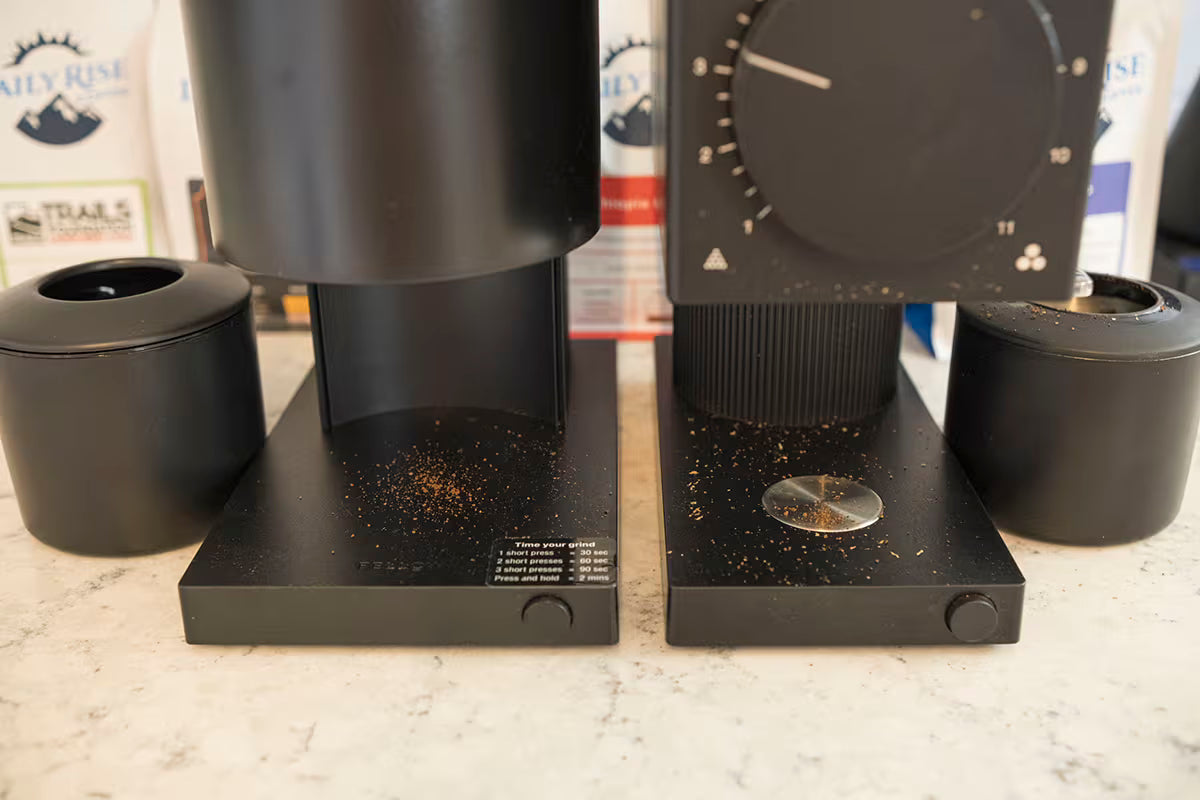
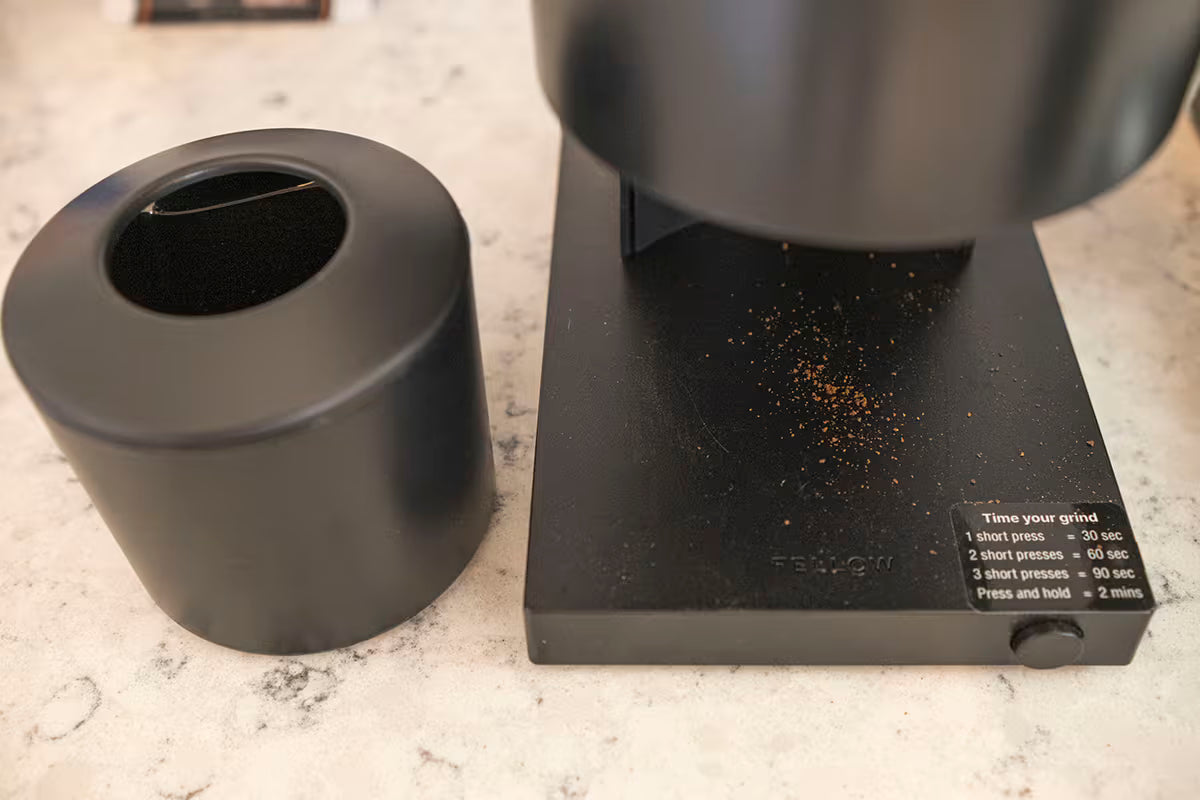
The amount of leftover grinds that typically pile up / fall out after a knock
When it comes to the Ode vs. Opus and grinds mess, the Ode would appear to be a bit egregious compared to its sibling, consistently putting out more strays due to static, burr shape,
construction, and other factors. But in my testing, I noticed the Opus was becoming strangely messy, in fact far more so than the Ode in between grinds. What was happening? It turns out the very nifty feature of a grinds knocker is really helpful when it comes to cleanup, and I’d always use the knocker of the Ode before setting up for a new grind. The Opus doesn’t have a knocker, but its spherical lid does act as a bellows when reinserted to the top of the load bin, meaning if you’re the kind of weirdo like me who puts the lid back on before placing the catch beneath the grinder, it’ll spit those old grinds all over the tray, and it’s enough of a mess to let out a bit of a sigh for a device intended to be “mess-free”. So, don’t be like me, and always put your catch back first kids.
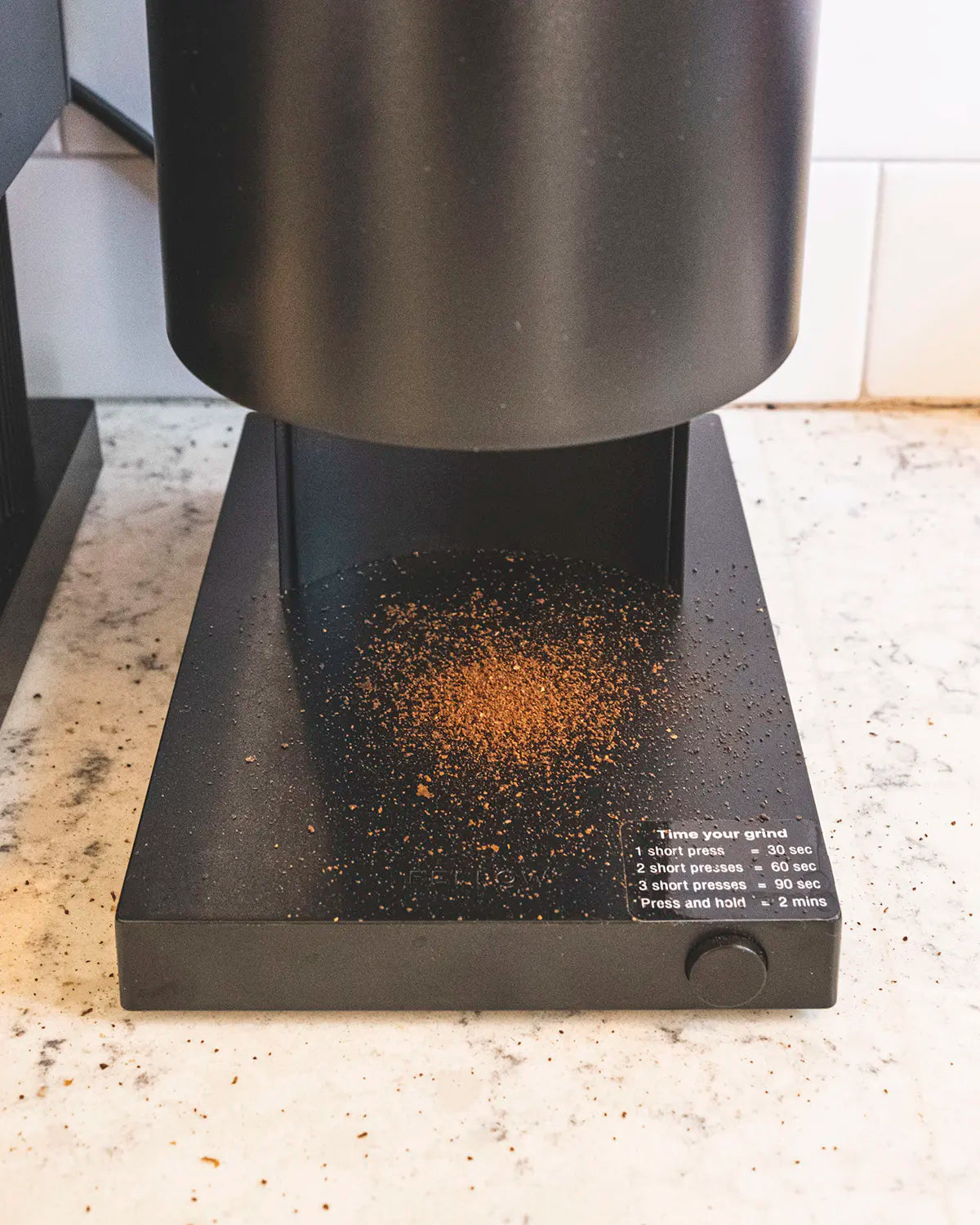
As stated above though, without the catch issue the Opus does perform very very well in leaving the kitchen mostly mess-free. There’ll still be a few strays here and there, but on the whole, there’s really no static buildup or fine-grind coagulation that I’ve noticed, while the Ode does suffer a slight bit from static and fraying grinds.
OK, so what one should I buy?
In short, if budget is a concern and you don’t want the Gen2 Ode, the Opus blows the Gen1 Ode out of the water from where I am standing in almost every category. I really want to love the Ode as I think it’s aesthetically gorgeous, it feels nicer than the Opus, and the little marks of craftsmanship seem a bit more authentic on the founding Fellow. The Ode would be fantastic if you’re only ever going to do pour-overs, and sometimes it’s those tiny features that would make you want to go with the Ode over the Opus; Hell, you can even upgrade the thing if you really want to get nerdy on it. But all those notes sound like a dose of Copium when the reality is that the Opus is a far more versatile machine that has fewer issues, less mess, and more to give. The photo evidence alone should be enough to decide on the Opus for anyone looking to get the most bang for their buck, especially when considering the additional accessory, more thoughtful catch construction, and far superior performance, The Opus is the overall winner!
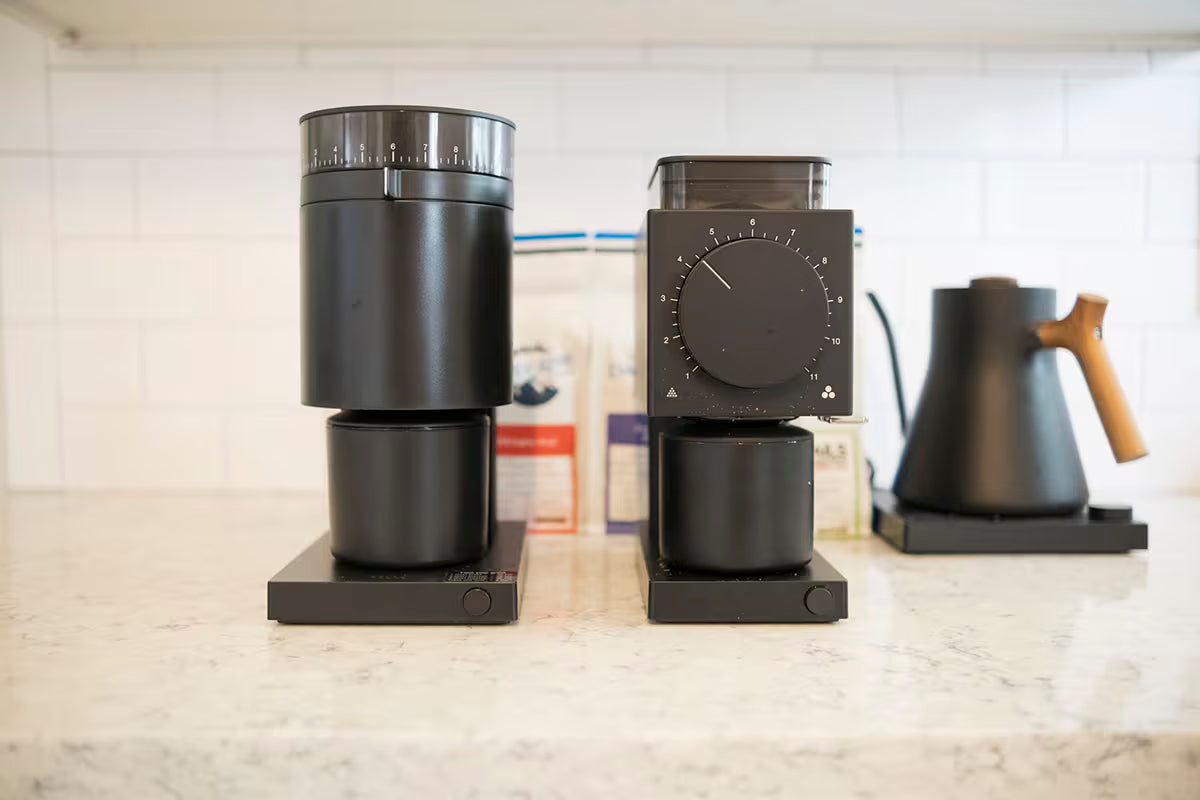
I’d love to get my hands on the Gen2 Ode someday and see how it compares to the Opus, but the price is just over the cusp of prohibitive at $350, and for $150 less you’ll have a grinder that is an astonishing value for the price. Yes, the Opus is very much worth the $200, and that’s why we are going to start carrying it over at the website, so when you’re picking up your next online order you can upgrade your kitchen at the same time. I’d recommend it over any of the cheaper grinders out there, and if you’re able to save up for it on a budget you’ll not be disappointed!
Want more coffee photos and reviews?
Follow us @dailyrisecoffee and @paydnaugustine
Interested in buying A Fellow Grinder?


